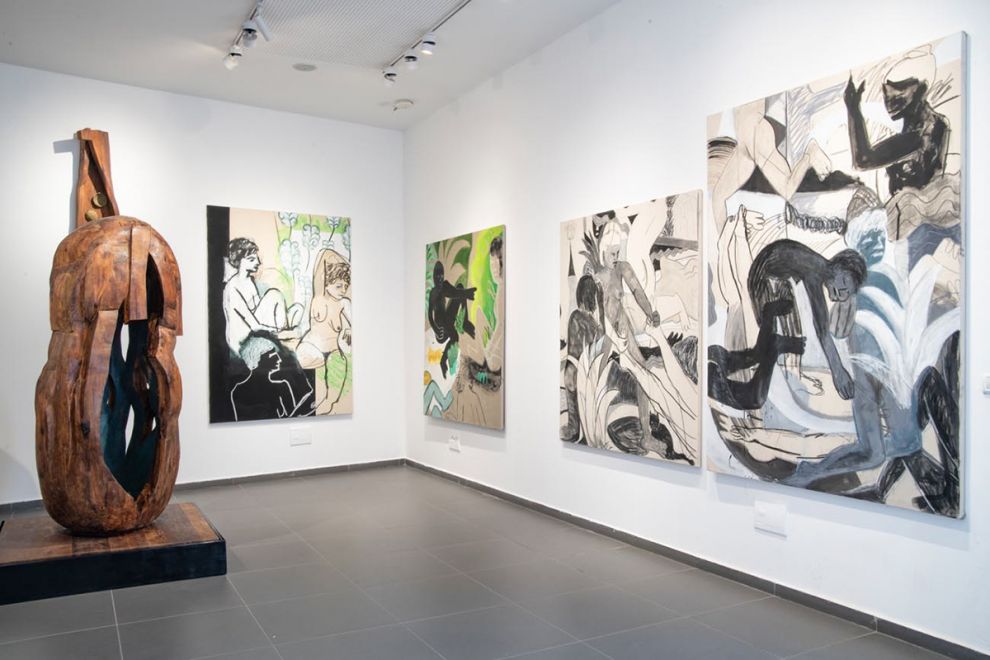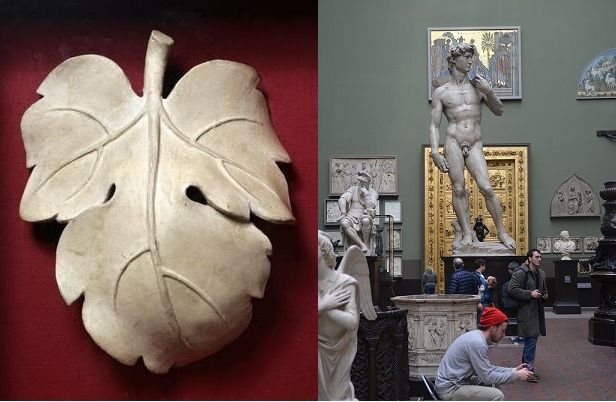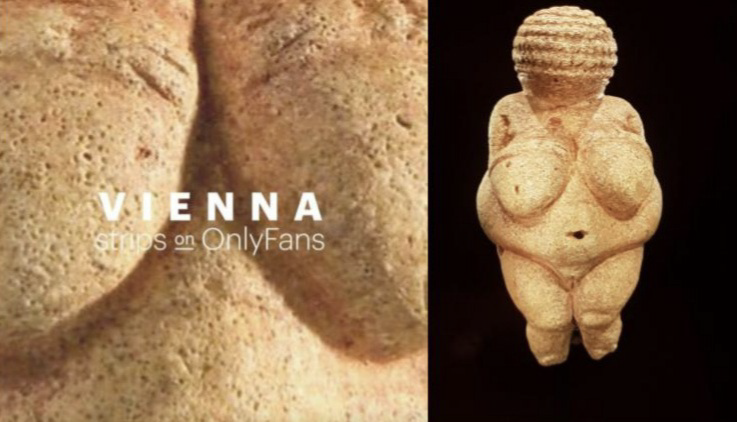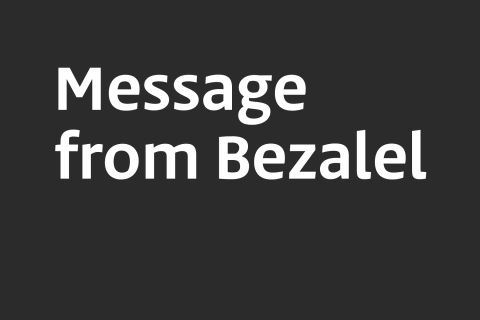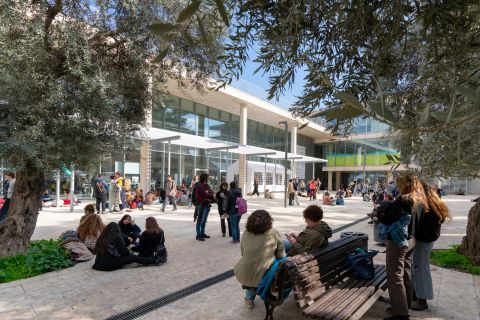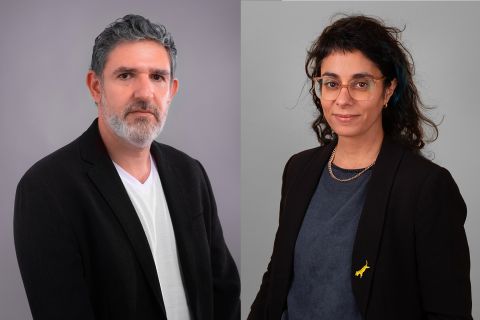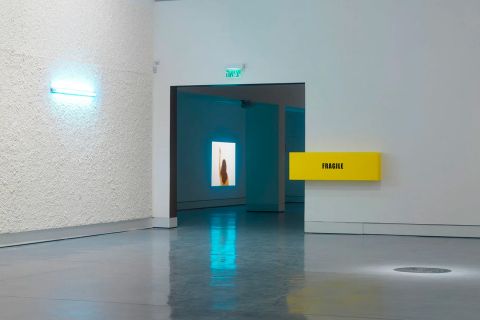Bezalel News
חדשות בצלאל
أخبار بتسلئيل
Nudity, Art and Censorship- Whose Decision Is It?
That was the title of a report by Yael Friedman in "Ha'aretz" on the 20th of December 2022. The city of Jerusalem is demanding the removal of nude paintings from an exhibitio, out of "consideration for the local population". The exhibition presents images of the female body, and is being held at a municipal gallery on Jaffa street, which borders ultra-orthodox (haredi) neighborhoods. This step was taken in spite of the fact that the nude paintings are not facing the street and at the entrance there is a sign warning of the contents. The debate heated up, and has not stopped as of this writing. The exhibition that was supposed to be open on the 21st of December, was curated by Avital Wechsler and was dedicated to the work of both Sarah Benninga and Rachel Rottenberg.
Of course it is not the first time that a museum or a gallery are requested to remove art pieces considered to be offensive. Neither is it the first time that it happens in a municipal institution where the mayor, or someone on his behalf, gets involved. The mayor of New York, Rudy Giuliani, in 1999 ordered the removal of the work "The Holy Virgin Mary", 1996, by the British-Nigerian artist Chris Offili, from the "Sensation" exhibition at the Brooklyn Museum, for having used, on one hand pornography cutouts of feminine genitals, and on the other hand elephant dung. Giuliani made it clear that if the management of the Museum will not comply with his demand, he will stop supporting the museum and even remove it from the building where it was situated.
Regarding censoring a work of art in an exhibition, and especially censoring presentations of the naked body, it is interesting to examine the cases in which the museum itself had to face this issue and how it handled the situation.
In 1857, a replica of the statue of "David" by Michelangelo arrived in South Kensington, at what would become the Victoria and Albert Museum. Following the shocked reaction of Queen Victoria at the sight of the naked body, (even though she was the one to donate the gift to the Museum), the Patrons of the Museum decided to make a plaster leaf with two hinges (to cover the part of the body that we are forbidden to see), for occasions when a Royal visit to the Museum might occur. Today the leaf is presented at the back of the pedestal of the statue, a testimony on one hand, to the Museum's commitment to the original work (even though it is a replica), and on the other hand, the history of the display and the discussion about how to present it.
Incidentally, even before the decision was made not to use the leaf, the management of the museum announced that the "Gallery of replicas is often used for private teachers teaching young female students and that none of them ever complained about it." Needless to say the original work is represented in all its glory and nudity in the Accademia di Belle Arti (Academy of Arts) in Florence, and that two replicas are to be found in public spaces in the city.
In contrast to the Museum which chose to consider the feelings of the Queen and other "God-fearing" women in Victorian England, and protect the sensitive souls of the kingdom's children by using self-censorship, it is interesting to see the reactions of Viennese museums to external censorship, which prevented them from marketing exhibits with nude drawings, for fear that they present "pornographic potential". Time after time pictures presenting nude men and women that city museums and galleries put on social media (such as Facebook, Instagram and Twitter) were erased from the internet. That is what happened, for example, to the drawing of Nobuyoshi Araki presented in the Albertina Museum, to the painting of Egon Schiele, in the Leopold Museum, to the painting of Peter Paul Rubens in Kunsthistorisches Museum, and to the approximately 29,500 year old Venus figurine from Willendorf presented by the Naturalhistorisches Museum (Natural History Museum).
In October 2021 the above-mentioned museums got together in a subversive act in which the Tourism Counsel of Vienna subscribed to the Only Fans site, (a popular site of pornographic content, for adults only), and shared photos of the best works of art that the city takes pride in presenting. Of course in regard to Vienna, we must mention the motto of the Secession Movement that declared over a hundred years ago: "Every generation and its art and to art its freedom". No doubt this subversive action, with its cynical aspect, was meant not only to remind the public what is shown in the Museums of the city and to promote the exhibits, but mainly to provoke a profound dialogue about the boundaries of this discussion, and about freedom of art, artists and curators.
Returning to the ongoing events in Jerusalem, the question we must ask is whether the financing body, be it City Hall or another government body, has the right to interfere with what is going on in a gallery or Museum and censor the presentation, or the work of curation.
Dr. Naomi Meiri-Dan
Lecturer in the Department of Visual and Material Culture
